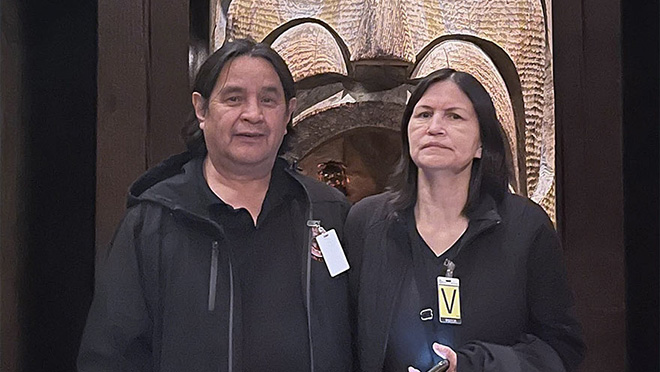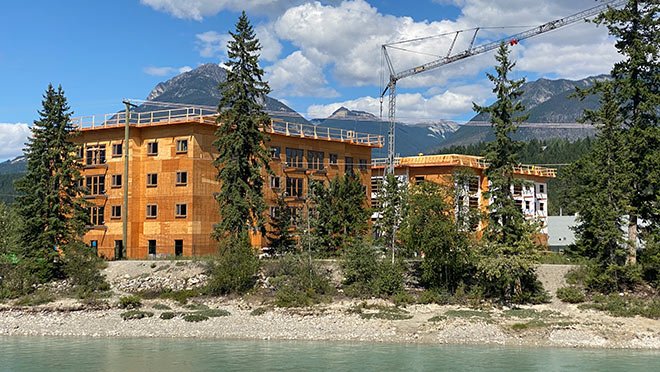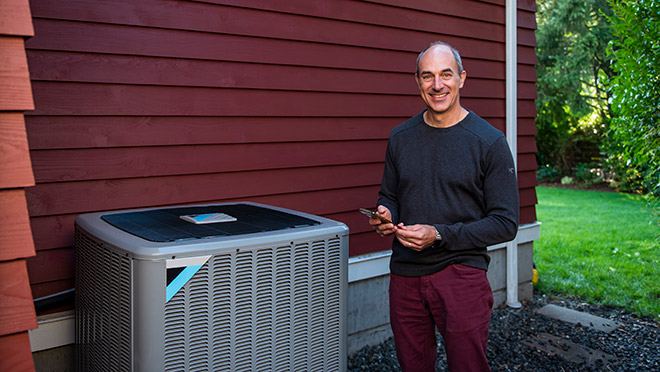January 2023

Nuxalk Nation publishes West Coast Building Standard
Richard Hall, an Indigenous leader and housing consultant from Nuxalk Nation, recently published the West Coast Building Standard with support from BC Hydro. It is, to our best knowledge, the first Indigenous-led and developed residential building design guide in Canada that aims to create culturally appropriate, affordable, energy-efficient homes for coastal and other Indigenous communities.
Building on his extensive experience as a home builder and inspector, Richard created simple design solutions, such as undercutting doors and strategically locating windows to increase passive ventilation, to respond to energy efficiency requirements while acknowledging cultural needs and habits. The West Coast Building Standard uses durable, low-carbon building materials, air-tight insulated crawlspaces, and heat pump mechanical systems to minimize moisture damage, extending the life of the home.
Extensive affordability features such as centrally located plumbing and standardized window, door and room sizes contribute to reducing construction cost significantly. Richard, with support from BC Housing and BC Hydro, engaged RDH Building Science to verify that homes met energy efficiency requirements to a minimum of Energy Step Code 3. RDH confirmed this level of performance.
"The technical aspects are better ventilation and heating but within the limited budget that First Nations have. With building science and technology, we can go from $700/sq. ft. for a Passive House to $150/sq. ft. for this design," says Richard.
One of the key specifications that Richard incorporated into the West Coast building standard is a shared cultural kitchen for activities such as canning, skinning and weaving. He explains that "the cultural kitchen hosts an additional fridge separate from the main kitchen where the materials absorb and dissipate moisture and may save you thousands of dollars by not using the everyday kitchen. It's a place designed to preserve fish, salmon, animals that we thrive on."
According to Richard, the West Coast Building Standard can be replicated and adapted for other Indigenous communities. "The design spaces complement each other. They are based on the performance targets of the Energy Step Code and the products are selected for durability, which makes it affordable. This booklet can be easily adapted for community needs in the North or Interior – it has all the solutions in it. It's designed to manage costs, and it's formulated for minimizing waste and standardized sizes."
For more information on the The Nuxalk Nation Housing Initiative, visit: Wet West Coast: The Nuxalk Nation Housing Initiative – Coastal First Nations. For more information on the rationale and application of the West Coast Building Standard, contact us by email.

Designing low-carbon buildings ahead of the curve
B.C.'s Carbon Pollution Standard is set to roll out later this year. Once adopted, this provincial regulation will enable local governments to limit greenhouse gas emissions from new construction.
In the meantime, some forward-looking developers are already building homes that meet near-zero carbon standards. That's the case for Rod Nadeau, managing partner of Vidorra Developments and Innovation Building Group, who has been building all-electric multi-unit residential buildings. Two of the recent developments Rod headed up include Oso in the Town of Golden and Orion in the Village of Pemberton.
According to Rod, even though the Carbon Pollution Standard wasn't in place during the time of construction, there was a clear rationale to construct high-performance, near-zero-carbon all-electric buildings. By using a high-performance building envelope with a central ventilation system and carefully planned ductwork, he's been able to downsize heating systems by 90%, achieving significant electrical and greenhouse gas savings. A B2E case study on Orion noted that "this energy performance translates to a greenhouse gas intensity (GHGI) of approximately 1 kg CO2/m2 per year which is low enough to meet the highest level of the Province's upcoming Carbon Pollution Standard for new buildings."
The buildings are also cost-effective. According to Rod, "the business case to adopt all-electric high-performance buildings is we build them at a 30% discount to Conventional Code minimum buildings that are the standard today."
These design innovations come from years of experimentation and performance monitoring. Rod explains that "we've been monitoring our buildings for quite a few years now. We installed energy monitoring equipment on the water systems and the heating and cooling and the ventilation systems so we can monitor them almost in real time." Collecting this data "has allowed us to fine tune these systems, because we know when they're running, how much energy they're using, and if they're using more than they should, then we have a problem and we look into solving it." Rod adds that "twenty years ago this was almost insurmountable to figure out how to actually build these buildings." Today, "it's mature technology. It's readily available across the country. It's all electric."

North Shore residents "Jump on a New Heat Pump"
According to a new report from Metro Vancouver's North Shore communities, local governments can play important roles in helping homeowners switch to a heat pump.
That's the case laid out by the District of North Vancouver, City of North Vancouver and the District of West Vancouver, which recently released a report from phase two of their Jump on a New Heat Pump campaign.
The report found that local governments have several key areas of influence to accelerate fuel switching to heat pumps, including being trusted sources of information, helping to reduce barriers, and sharing real-life examples.
Adam Wright, a sustainability planner for the District of North Vancouver, told us that "there are many more heat pump resources available today than there were two years ago, including webinars, installation guides, energy coaches, rebates, contractor training opportunities, and case studies. I think going forward it will be important for local governments to simplify the process for people interested in making the switch, tailoring programming to the specific needs of community members, and providing ongoing support throughout the full retrofit journey."
A key part of Jump on a New Heat Pump is its Virtual Home Energy Check-Up (VHEC) program, where homeowners can connect with an Energy Expert who will walk them through the options available for their home. A total of 82 VHEC requests were received between November 2021 and September 2022.
A unique feature of the program is that it's a collaboration between three neighbouring local governments. According to Larisa Lensink, an environmental sustainability planner with the City of North Vancouver, the three communities "recognized that the Jump on a New Heat Pump program could benefit from a coordinated approach to provide consistent messaging and supports for residents and builders across the North Shore and maximize our impact."
For more information on the report, contact us by email.

New strategy levels up heat pumps
A new strategy from the Vancouver Economic Commission (VEC) and BC Building to Electrification Coalition (B2E) aims to increase the availability, affordability, and quality of heat pump technologies in B.C.
The BC Heat Pump Technology Attraction Strategy is a unique climate action and economic development initiative that's part of both the BC Building to Electrification Road Map and VEC's Zero Emissions Economic Transition Action Plan.
Fundamentally, the strategy aims to increase both the availability and the quality of heat pumps in B.C. to assist local and provincial building decarbonization goals, while also advancing economic development opportunities – such as local assembly of equipment, workforce training, and spurring of innovation. Successfully implementing the strategy will help everyone meet their climate objectives and build greater economic prosperity and resilience.
The strategy will be managed via a working group hosted within the Building to Electrification (B2E) Coalition and anyone is welcome to join. While the strategy is primarily focused on industry actors and the provincial government, local governments can support implementation by joining the working group.